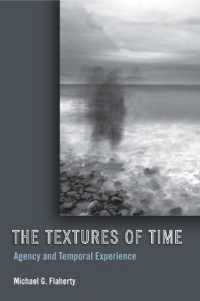Full Description
This edited volume addresses the circulation of works of art, images, and ideas between the Iberian and Italian world and the subsequent responses this motion generated.
Amongst the themes discussed are the concepts of centre and periphery, replicas and alterations, and how items and ideas were reinterpreted. The processes of appropriation and transformation create an artistic geography of identities in which originality can be studied through the processes of assimilation of images shared between Europe, Asia, and America. Chapters challenge the negative conceptualization of "copying" arguing that the "copy" is not simply a derivation but a new creation that is shaped by the interests and preferences of the receiver. Similarly, contributors argue for a more nuanced concept of what exactly an artistic centre is.
The book will be of interest to scholars working in art history, Renaissance studies, and Iberian studies.
Contents
Introduction 1. Italy-Spain in the Renaissance: Model, Active Reception, Reaction, Rejection 2. Valencia. Art in a Mediterranean Metropolis in the Fifteenth Century 3. The Road between Vélez Blanco and Murcia: A Southern Crossroad for the Italo-Spanish Dialogue at the Beginning of the Sixteenth Century 4. From Donatello to Titian. Notes on Replicating and Re-Reading Images in Sixteenth-Century Spanish Sculpture 5. Marcantonio Goes Global 6. The "Apocalipsis de San Amadeo" from Renaissance Italy to Viceregal America: Veiling and Revealing Visual Arcanes 7. Reception of Vasari as a Painter: The Immaculate Conception Outside of Italy 8. From Seville to Lima and Back to Seville: Two Crucifixions by Juan Martínez Montañés 9. Three Pistils, Three Nails. The Passion Flower and the Debate on the Iconography of the Crucifixion in Early Seventeenth-Century Spain 10. Between Identity and Transformation: Neapolitan Sculpture in the Hispanic World








